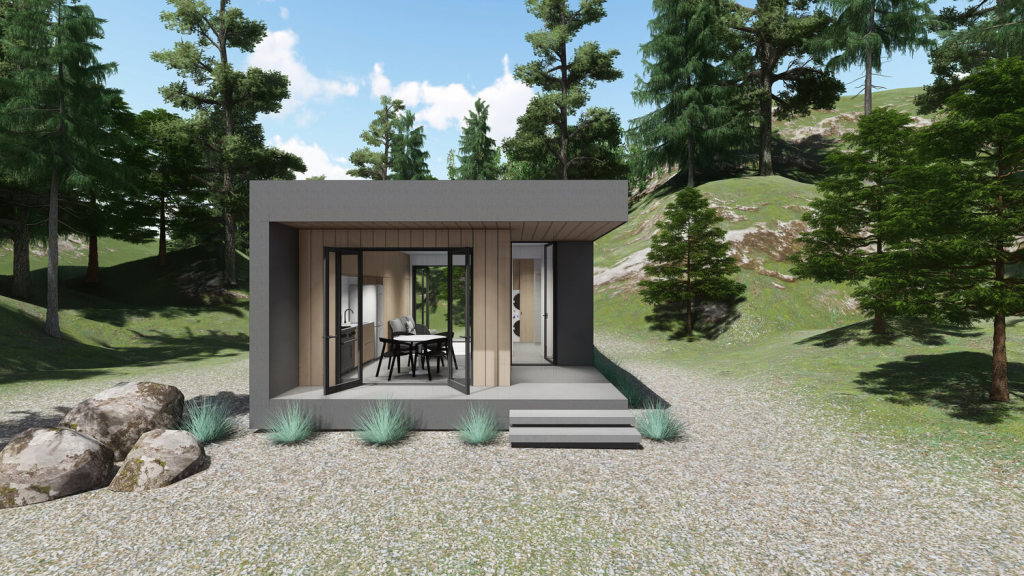Next year will be big for ADUs in California. On January 1, 2020 a series of laws will go into effect that revise and relax the laws governing ADUs. The new laws are intended to help address the housing shortage in California and make ADU development easier. For developers, investors and homeowners these laws will open up a range of investment possibilities. and increase the potential to earn supplemental reoccurring income.
What are ADUs?
Accessory Dwelling Units (ADUs) are known by many names: granny flats, in-law units, backyard cottages, secondary units and more.
What are the benefits of ADUs?
- ADUs are considered an affordable type of home to construct in California because they do not require paying for land, major new infrastructure, structured parking, or elevators.
- ADUs can provide a source of income for homeowners.
- ADUs allow extended families to be near one another while maintaining privacy.
- ADUs allow homeowners the flexibility to share independent living areas with family members and others, allowing seniors to age in place as they require more care.
The four laws that have the most impact on ADU development are Assembly Bill (AB 881), Assembly Bill (AB 670), Senate Bill 13 (SB 13), and Assembly Bill 68 (AB 68). After studying each of these laws, we’ve extracted the key points to help summarize the new regulations. Below are our takeaways from each of the laws:
ASSEMBLY BILL NO. 881, BLOOM
Main Takeaways:
- The maximum setback for an ADU would be 4’-0”. Local authorities can no long enforce large setbacks on ADUs.
- If an ADU is created in an existing structure i.e. a garage, at the same size, the local agency cannot require replacement parking to be provided if the ADU replaces the parking spaces. For example, if you build an ADU in an existing two car garage. The two parking spaces do not need to be put somewhere else on the lot.
- There is no more maximum or minimum size for an ADU based on the percentage of the primary residence. In the past local jurisdictions could limit the size of an ADU based on a percentage of the primary residence.
- The local permitting agency must act on the submittal of an application for an ADU within 60 days on a ministerial CEQA exempt basis. (Previously it was 120)
- Local authorities cannot impose owner-occupancy requirements on the construction of ADUs. In other words, the owner of the property does not have the live in the primary residence or the ADU on the lot. These can both be rental units and the owner of the property can live elsewhere.
- Clarifies “public transit” to mean both bus stops and bus routes within a half mile walking distance from the ADU.
ASSEMBLY BILL NO. 670, FRIEDMAN
Main Takeaways:
- Any deed or covenant prohibiting ADUs is void and unenforceable on a single family lot.
- An HOA , CC&R or neighborhood group cannot prevent you from building an ADU on a single family lot.
This bill is going to have a big impact in many of the coastal communities of Southern California. Most of these communities have strict HOAs or CC&Rs that restrict ADUs. Bill 670 will make these unenforceable.
SENATE BILL NO. 13, WIECKOWSKI
Main Takeaways:
- Agencies cannot impose impact fees on ADUs under 750 SQFT.
- The applicant on the application to build the ADU does not have to be an “owner-applicant” of either the primary residence or the ADU.
ASSEMBLY BILL NO. 68, TING.
Main Takeaways:
- This law allows for ADUs as well as Junior ADUs on lots where certain access, setback and other criteria are met. This means that there could be up to three units on a single property.
What will result from these new laws? We would expect more homeowners and investors building ADUs on their properties. The reduced friction in the permitting process and relaxed code requirements means increased potential to earn supplemental income, increase your property value and explore new investment strategies. Don’t be surprised if you see investors and developers separating their properties into three rentals (Primary Residence, ADU, and Junior ADU) and collecting income on each of them individually.
Sample ADU: 360 square feet Studio * 19’x26’

